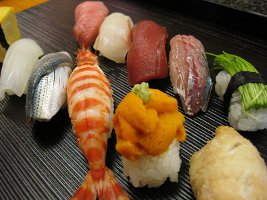 Unagi, hamachi, ebi, sake, shiromaguro, ahi....What do these names mean? If you are salivating just reading this, you know these popular Japanese sushi terms for eel (fresh water), yellowtail, shrimp, salmon, albacore tuna, and yellowfin tuna, respectively. The American appetite for sushi abounds. But which of these choices are sustainable to consume and which should be avoided? Which restaurants serve sustainable sushi? If you're retrieving your Seafood WATCH mobile phone app (or your pocket guide), kudos to you.
Unagi, hamachi, ebi, sake, shiromaguro, ahi....What do these names mean? If you are salivating just reading this, you know these popular Japanese sushi terms for eel (fresh water), yellowtail, shrimp, salmon, albacore tuna, and yellowfin tuna, respectively. The American appetite for sushi abounds. But which of these choices are sustainable to consume and which should be avoided? Which restaurants serve sustainable sushi? If you're retrieving your Seafood WATCH mobile phone app (or your pocket guide), kudos to you.
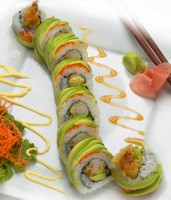 Dragon Roll
Dragon Roll
Frequenting a sushi restaurant is an artful and unique dining experience. Ornate sushi boats, deft Itamaes (sushi chefs), hand-thrown cups of hot green tea and colorful and dazzling plates of sushi delight all senses. Great care is taken in the creation of each dish. Even the names of dishes are artfully crafted, i.e. the "Dragon," the "Spider," the "Rainbow" and "Alaska" and serve to ontologize their presentation.
It comes as no surprise then that a discerning eye for the sustainability of these incredible edibles oftentimes is veiled by a sense of guilty pleasure. And even if you muster the courage to ask your Itamae for the details of your maguro sashimi, your Itamae will often only be able to verify the species, cut, and grade of the fish.
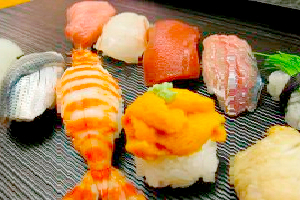
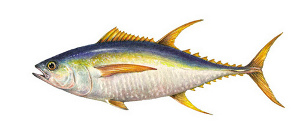 Seawatch Logo, Yellowfin Tuna
Seawatch Logo, Yellowfin Tuna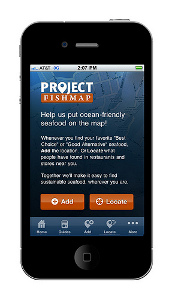 Project FishMap iPhone App
Project FishMap iPhone App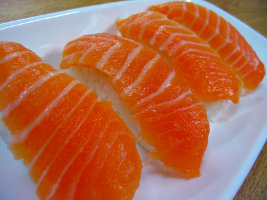 Salmon Nigiri
Salmon Nigiri